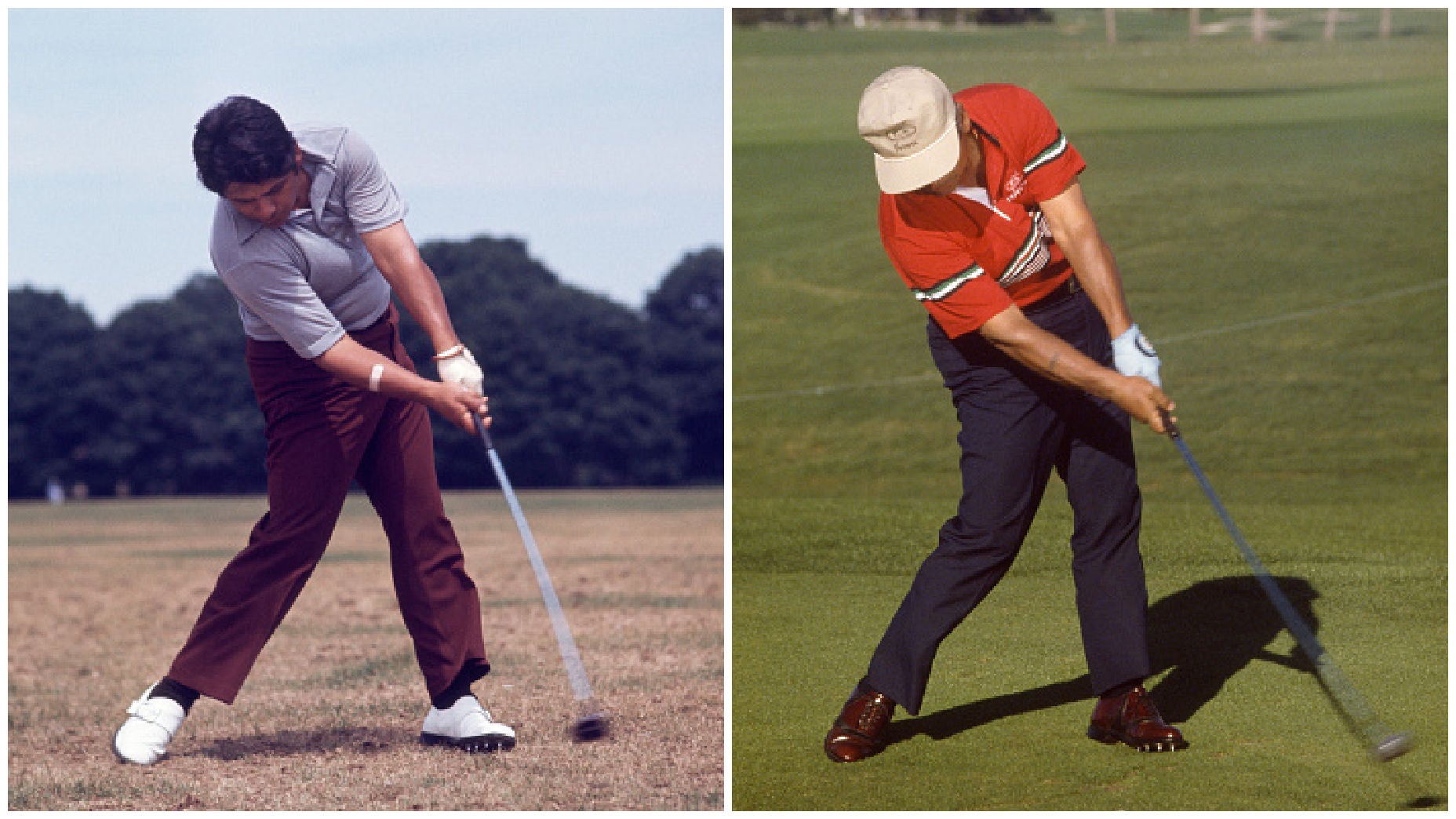
The Pete Dye Course at French Lick Resort (Courtesy of French Lick Resort)
In the video, Dye credits the incredible ambience – no houses, 40-mile views, a sense of seclusion – as well as discussing the incredible amount of work that went into making the site playable with more than 2.5 million cubic yards of dirt moved. The edges of the property were lifted, in essence, to make enough room for golf before the sides of the hills dropped away.
“We had to do a lot of pushin’ and shovin’ to make it walkable,” Dye said. “… The ravines around the sides of the golf course are dramatic. Some of them drop 100 feet, which is quite a bit, so you don’t want to get too far off base or you’re down the hill for a long ways. …
“In all due respect to other golf courses, usually it’s a swamp or a landfill or something. This site here, without a doubt, is an unbelievable site compared to anything I’ve ever worked on, anyplace. Anything in the United States, I’ve never had anything remotely like this.”
With more than 200 feet of elevation changes, it’s the ravines that are most visually staggering within the confines of the course. Small ribbons of fairways run atop ridges as the land falls dramatically to one side or another. On many holes, a missed shot will catch a slope and just keep tumbling.
A perfect example is the par-5 third hole, which tips out at 641 yards. Bunkers guard the right side of the fairway in the landing area for a tee shot, and the left side falls more than 50 feet down a steep ravine, with the hole curving steeply left around the drop-off before reaching the green. A tee shot or second-shot layup that rolls down the hill leaves a player a blind recovery shot with only the clouds as aiming points, with a march down then back up the slopes that would leave a cross-country runner winded.

The Pete Dye Course at French Lick Resort (Courtesy of French Lick Resort)
There are plenty of examples of such slopes on the Dye, including on the finishing hole. Another par 5 that hooks around a ravine, the 18th forces golfers to play cautiously far to the right of a hillside that tumbles toward the range, lest they end their round playing from the bottom of a slope that would make a beautiful toboggan run in winter.
Combined with the long views of the Indiana hills rising in the distance and surrounding Hoosier National Forest, the internal ravines and Dye’s masterful shaping force a golfer to ask an important question: Should I reach for the driver first, or the camera? At almost every turn, a player gains a new vantage point of an unexpectedly beautiful panorama. Forecaddies are required on the Dye Course, and it’s a good thing. Otherwise some resort golfers might slow to a crawl as they wander about, taking in the views.








